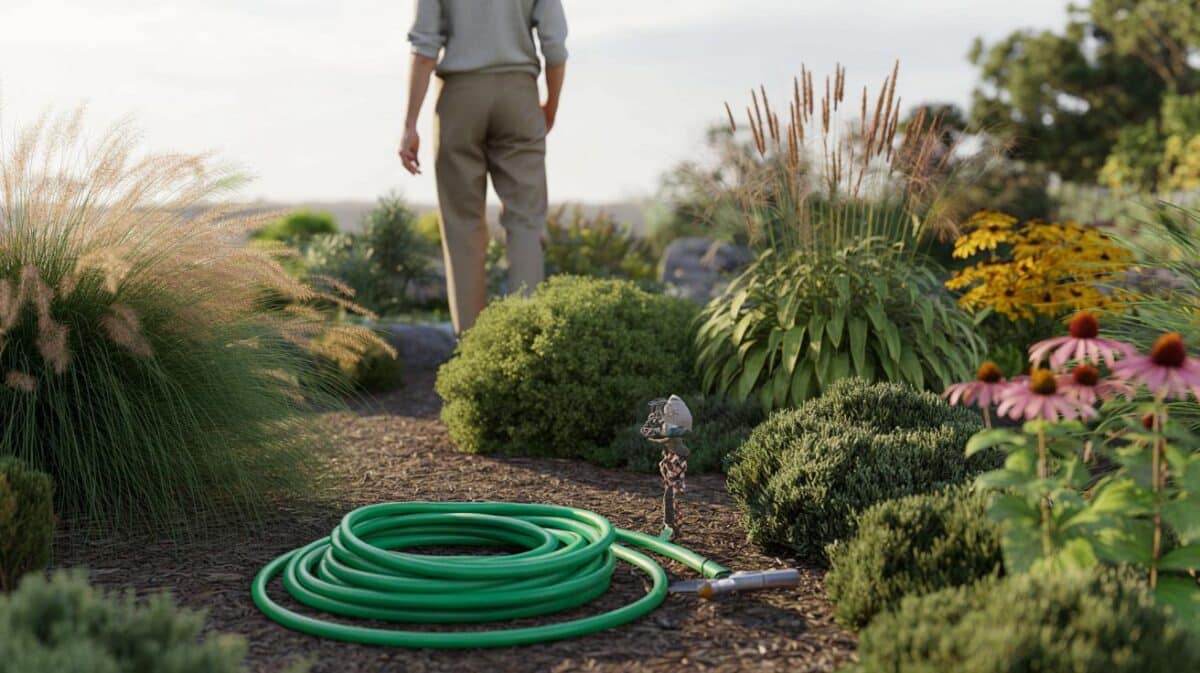Across Britain, gardeners are turning to autumn sowing of native flower mixes that bank rain, beat drought and invite wildlife. The approach leans on local species, light-touch work and patient timing, with results that show early next spring.
Autumn sowing shifts the odds: why acting now leads to a living garden
Cool nights and still-warm soil give seeds a gentle start. Moisture lingers longer, so the surface stays workable and the soil life stays active. Seeds settle, then winter provides natural cold stratification that breaks dormancy. Spring warmth then triggers quick, even germination.
This schedule buys you time. Roots form before heat arrives, which lifts survival during dry spells. Plants sown now often show stronger growth and sturdier stems by early summer. You also reduce time spent watering, because the rain of October and November does the heavy lifting.
Autumn’s sweet spot: sow 3–5 grams per square metre, leave seeds on the surface, let winter do the stratification, and skip the sprinkler.
Local provenance matters. Species adapted to your region track rainfall patterns and daylight length. They also support nearby food webs, which means more pollinators on the wing and more birds in the hedge when seed heads mature.
Pick the right seed mix: native flowers that laugh at drought
Deep-rooted perennials hold on when heat builds. Annuals add first-year colour while perennials mature. A good mix blends both, keeps nectar flowing across months, and leaves seed for birds in late summer and autumn. Aim for species that suit your soil, your sunshine and your mowing plans.
What to include
- Yarrow (Achillea millefolium) for early nectar and resilient foliage.
- Knapweed (Centaurea nigra) to feed butterflies and later goldfinches.
- Oxeye daisy (Leucanthemum vulgare) for bright drifts and sturdy stems.
- Field scabious (Knautia arvensis) and small scabious (Scabiosa columbaria) for long nectar runs.
- Bird’s-foot trefoil (Lotus corniculatus) to support common blue butterflies.
- Red campion (Silene dioica) for shade edges and late flowers.
- Wild carrot (Daucus carota) to draw hoverflies and lacewings.
- Viper’s bugloss (Echium vulgare) for bees and vivid spikes.
- Cornflower (Centaurea cyanus) and field poppy (Papaver rhoeas) for first-year colour in sunny, open ground.
Match seeds to your soil
| Site conditions | Native species to prioritise |
|---|---|
| Free-draining, sandy | Viper’s bugloss, lady’s bedstraw, wild carrot, sheep’s fescue as a grass partner |
| Chalk or limestone | Harebell, small scabious, knapweed, kidney vetch |
| Heavy clay, seasonally wet | Meadow buttercup, yarrow, oxeye daisy, ragged robin on the damp edge |
| Partial shade, hedge lines | Red campion, self-heal, wood avens, greater stitchwort |
| Hot, open, south-facing | Bird’s-foot trefoil, knapweed, wild marjoram, wild thyme |
Choose seed of local origin where possible. Regional provenance often fits rainfall, soil biology and day length, while lowering the risk of invasive escapes.
No hose required: a simple method that rides on autumn rain
Five steps in under an hour
- Rake the surface to 1–2 cm depth to open the top layer and break any crust.
- Remove live weeds and thick thatch to reduce early competition.
- Weigh out 3–5 g seed per m². Mix with dry sand for even scatter. Broadcast by hand in two passes at right angles.
- Press seeds onto the soil with a board or the back of a rake. Do not bury them.
- Let rain water them in. Only water if the autumn turns unusually dry for several weeks.
Mark the edges to prevent trampling. In exposed sites, a light mulch of fine gravel or well-rotted leaf mould helps hold moisture without smothering seed. In spring, add a thin dressing of garden compost to feed soil life.
Watch how patches perform. If a corner leaps ahead, repeat that portion of the mix there next year. Where gaps remain, over-sow lightly in April with annuals such as cornflower to carry colour while perennials bulk up.
Leave stems and seed heads standing until late winter. Finches feed on them, and hollow stalks shelter solitary bees.
A refuge in motion: birds, butterflies and helpful insects move in
From March, nectar-rich flowers pull in queen bumblebees. As days warm, hoverflies and solitary bees join, pollinating fruit and vegetables nearby. By midsummer, butterflies cluster on scabious and knapweed, then robins and goldfinches take the late seed. This steady turnover creates a small, working ecosystem.
A diverse mix also steadies pest pressure. Hoverfly larvae hunt aphids. Ladybirds and lacewings gain early nectar from umbellifers like wild carrot, then lay eggs nearby. You spend less on sprays, and the garden balances itself.
What visitors use your patch for
- Nectar and pollen from April to October, if the mix staggers flowering times.
- Seeds in late summer and autumn for finches and sparrows.
- Cover in winter from standing stems and uncut tussocks.
- Larval food plants, such as bird’s-foot trefoil for common blues.
Think layers: flowers for today, seed for autumn, and stems for winter cover. One bed can serve all three.
What to do next: light-touch care through the year
- Ease off the mower around the bed to let wildlife move. Cut informal paths so people can enjoy close views.
- Delay the main cut until late March. Remove and compost the hay to keep soil fertility moderate.
- Top up gaps with a pinch of fresh seed in April or September. Keep to 1–2 g/m² for infill.
- Hand-weed coarse invaders such as creeping thistle before they seed. Leave low rosettes that host insects.
- Skip high-nitrogen feeds. Flowers outcompete leaves when soil stays lean.
- Water only during prolonged drought. One deep soak a month beats little-and-often sprinkles.
Extra gains and watch-outs
Pair the mix with spring bulbs such as wild daffodil, snakeshead fritillary or English bluebell for early colour under the later rise of meadow flowers. Bulbs thread through the sward, then retreat as summer blossoms take over. This overlap keeps nectar flowing during shoulder months.
Check the seed list for region-appropriate species and avoid mixes bulked with non-native ornamentals that shed aggressive seed. If your plot borders farmland or a local nature reserve, pick a supplier that states UK provenance. Keep simple notes: sowing date, weather, species seen. A small log helps you refine the mix and shows children how quickly wildlife responds. If you only have a balcony, replicate the method in deep containers using free-draining compost, a 10–20 litre pot, and the same 3–5 g/m² rate adjusted to surface area.








